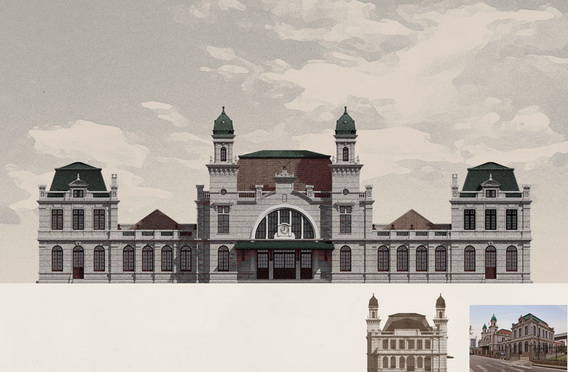Current position: > ENGLISH > COD Application Verification > Part8 >
[8.12]Wuhan's Design Sector Applies for “City of Design”
Release time:2017-09-10 11:01
|
At the conference, the organizers introduced the municipal government’s plan to apply for UNESCO City of Design membership. The government is making numerous preparations before the submission of its formal report to UNESCO next May, as required for joining the Global Creative Cities Network as a City of Design. The result of the application will be known by the end of the next year. The organizers indicated the ceremony to play an important role in the application process. It marked the first time Wuhan’s design sector gathered together to declare their collective participation in the application initiative. The event showcased Wuhan’s prowess in the design and creative sectors through outstanding works. They include: Zhongshan Avenue District Renewal Planning, winner of Award for Excellence in Planning from the International Society of City and Regional Planners (ISOCARP); the Ma’anshan Yangtze River Bridge, which won the 2016 George S. Richardson Medal Award from International Bridge Conference; and the Dinosaur Egg Museum, which was ranked among Dezeen’s top 10 public buildings of 2016. The UNESCO Creative Cities Network (CCN) is a project launched in October 2004, and dedicated to fostering creative sectors to support local social and economic development around the world. As of the end of 2015, 116 cities have become members of CCN, of which 22 joined as UNESCO Cities of Design. They included 9 cities from Europe, 4 from America, and 8 from Asia. The Chinese cities of Beijing, Shanghai and Shenzhen have successfully gained membership, and Wuhan may become the fourth City of Design if the initiative succeeds. |
That may be of interest to the article
- Ruopu CITY1000 Creative Projects
- Wuhan Design Biennale
- Wuhan Fashion Week 2018
- Great Rivers Forum
- Engineering Survey and Design Institute Dir
- Wuhan Night held in Beijing Design Week
- Message from Ms Irina Bokova on the Interna
- China's Dinosaur Egg Museum Blends the Anci
- Wuhan: Construct "Five Cultural Cities"
- 2016 Work Report of Wuhan Municipal Governm
- Regulations of Wuhan Municipality on Protec
- The WeChat Official Account of Wuhan Planni
- Wuhan Sets Up a Cultural Enterprise Credit
- Wuhan’s New 30 Articles Provides that At
- Wuhan Industrial Design Development Fund Pr
- Report on the Work of the Government and Po


